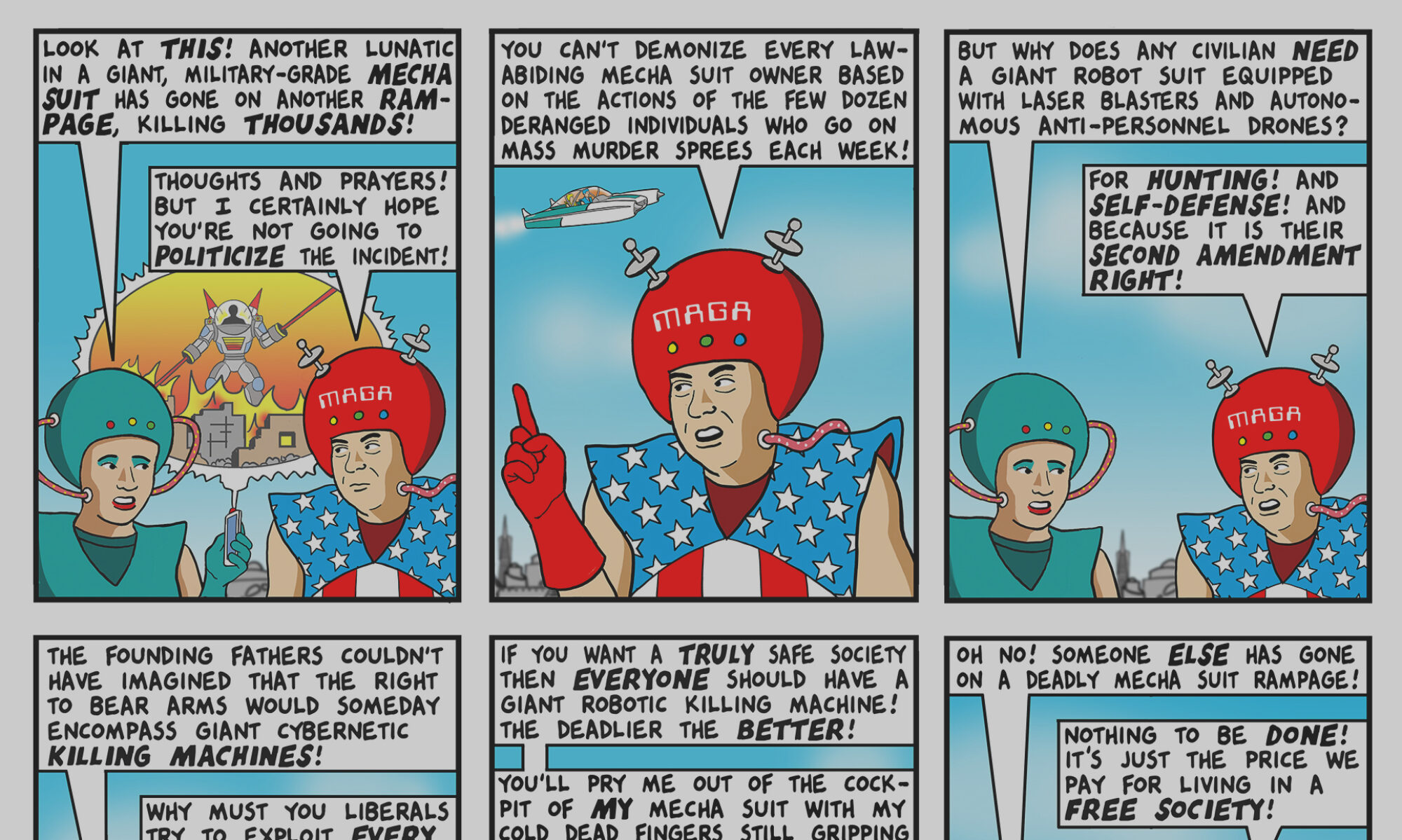Remember right after 9/11, when the Bushies went on a massive power grab and the right wingers assured us it was all good, nothing to worry about? The government may have abused its authority, spied on its own citizens, in some distant, half-forgotten era, but rest assured, it would never ever do so now, and anyone who suggests otherwise is a crazy tinfoil-hat-wearing conspiracy nut. It’s the “things are different now” syndrome, also known as the “refusing to learn from the mistakes of history” syndrome, wherein any such abuse is safely relegated to a less enlightened time, and therefore cannot possibly be repeated.
Until it is.
WASHINGTON – A year ago, at a Quaker Meeting House in Lake Worth, Fla., a small group of activists met to plan a protest of military recruiting at local high schools. What they didn’t know was that their meeting had come to the attention of the U.S. military.
A secret 400-page Defense Department document obtained by NBC News lists the Lake Worth meeting as a “threat†and one of more than 1,500 “suspicious incidents†across the country over a recent 10-month period.
“This peaceful, educationally oriented group being a threat is incredible,†says Evy Grachow, a member of the Florida group called The Truth Project.
“This is incredible,†adds group member Rich Hersh. “It’s an example of paranoia by our government,†he says. “We’re not doing anything illegal.â€
The Defense Department document is the first inside look at how the U.S. military has stepped up intelligence collection inside this country since 9/11, which now includes the monitoring of peaceful anti-war and counter-military recruitment groups.
* * *
Still, the DOD database includes at least 20 references to U.S. citizens or U.S. persons. Other documents obtained by NBC News show that the Defense Department is clearly increasing its domestic monitoring activities. One DOD briefing document stamped “secret†concludes: “[W]e have noted increased communication and encouragement between protest groups using the [I]nternet,†but no “significant connection†between incidents, such as “reoccurring instigators at protests†or “vehicle descriptions.â€
The increased monitoring disturbs some military observers.
“It means that they’re actually collecting information about who’s at those protests, the descriptions of vehicles at those protests,†says Arkin. “On the domestic level, this is unprecedented,†he says. “I think it’s the beginning of enormous problems and enormous mischief for the military.â€
* * *
“Some people never learn,†he says. During the Vietnam War, Pyle blew the whistle on the Defense Department for monitoring and infiltrating anti-war and civil rights protests when he published an article in the Washington Monthly in January 1970.
The public was outraged and a lengthy congressional investigation followed that revealed that the military had conducted investigations on at least 100,000 American citizens. Pyle got more than 100 military agents to testify that they had been ordered to spy on U.S. citizens — many of them anti-war protestors and civil rights advocates. In the wake of the investigations, Pyle helped Congress write a law placing new limits on military spying inside the U.S.
But Pyle, now a professor at Mt. Holyoke College in Massachusetts, says some of the information in the database suggests the military may be dangerously close to repeating its past mistakes.
“The documents tell me that military intelligence is back conducting investigations and maintaining records on civilian political activity. The military made promises that it would not do this again,†he says.
